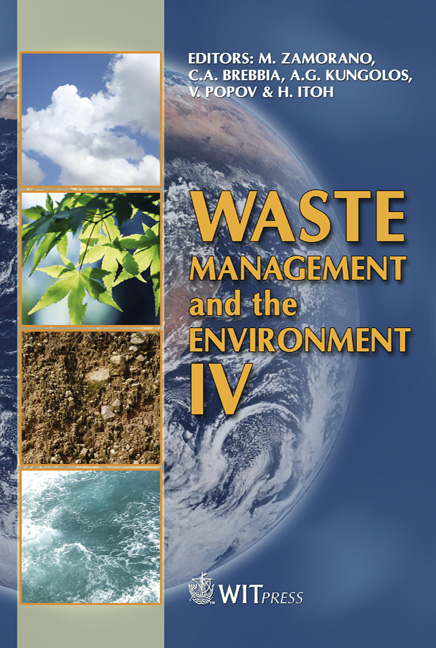Origins Of Chlorine In MSW And RDF: Species And Analytical Methods
Price
Free (open access)
Transaction
Volume
109
Pages
8
Page Range
551 - 558
Published
2008
Size
378 kb
Paper DOI
10.2495/WM080561
Copyright
WIT Press
Author(s)
W. Ma, S. Rotter, G. Hoffmann & A. Lehmann
Abstract
The chlorine content of municipal solid waste (MSW) and refuse derived fuel (RDF) plays a dominant role in combustion processes. In order to prevent operational problems, such as high temperature corrosion, quality assured analytical methods for the determination of the chlorine concentration are necessary. This paper presents results of the chlorine content of the main components of untreated municipal solid waste. Various analytical methods have been compared with samples with a differing matrix and chlorine speciation. The comparison intends to not only estimate overall content of chlorine in mixed waste, but also to clarify chlorine species/origin in various components which have further influence on chlorine thermal behavior during combustion. Keywords: chlorine, MSW, quality assured analytical methods, total chlorine content (TCC), elemental analyser (EA). 1 Introduction One of the major issues continuously challenging environmental management and pollution control at present is the safe disposal of municipal solid wastes (MSW). Incineration seems to be one of the alternative strategies for waste management proposed to replace landfilling. One option for utilizing MSW as a fuel is to process it to refuse derived fuel (RDF) aiming at improving its fuel characteristics. However, both MSW and RDF contain a large quantity of
Keywords
chlorine, MSW, quality assured analytical methods, total chlorine content (TCC), elemental analyser (EA).





